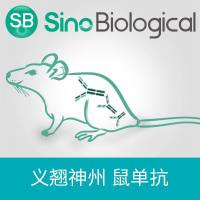Anti-HA Immunocytology
互联网
Anti-HA Immunocytology
The multiple copies of the HA epitope present in the HAT tag can be detected by the mouse monoclonal antibodies 12CA5 (Boehringer) and 16B12 (MMS101R; BAbCO, Richmond, California) (see Table 1). On Western blots against yeast protein, these antibodies often recognize a single cross-reacting band of about 50 or 125kD, respectively, although the level of the 50 kD polypeptide can be reduced by using cultures in the early phase of exponential division. The antibodies may also give punctate background when used for immunocytochemistry, although we have found that this can be eliminated by both minimizing the spheroplasting process and preadsorbing primary and secondary antibodies in multiple incubations against fixed yeast cells suspended in PBS. A rabbit polyclonal antisera is also available (101c500; BAbCO) but in our hands this was less reactive.
The antibody cleanup protocol is now a seperate document
Protocol
- Cells are grown in 5 mls of YPAD to an O.D. 600 of 0.75 to 1.
- To fix, 1/10 volume of 37% formaldehyde is added to the culture, which is shaken for a further 40 minutes at room temperature. Cells are then recovered by centrifugation at 1400 X g for 2 minutes, and washed (i.e. gently resuspended then recovered and the supernatant discarded) twice with Solution A (1.2 M sorbitol, 50 mM KPO4, pH 7).
- To spheroplast, cells are resupended in 500 ul of Solution A containing 0.1% b-mercaptoethanol, 0.02% glusulase and 5ug/ml zymolyase. The suspension is incubated at 37o C without shaking and checked periodically. As soon as the settled cell pellet loses its creamy, yellow colour and becomes translucent (30 to 45 mins), cells should be recovered and washed twice with Solution A.
- Cells are resuspended in 200 ul of solution A. A drop is placed on a poly-L-lysine coated slide and allowed to sit for 10 minutes. If one desires to examine several different strains on one slide, multiwell slides are available from Carlson Scientific (Peotone, Illinois).
- Excess solution is aspirated. The adhered cells are covered with PBS (150 mM NaCl, 50 mM NaPO4, pH 7.4) plus 0.1% BSA. The solution is allowed to sit for 5 minutes before aspiration. This wash is repeated twice with PBS/0.1% BSA containing 0.1% NP40.
- The cells are covered with PBS/0.1% BSA containing the primary antibody (Table 1). The slide is set on wet paper towels in a sealed chamber and incubated at 4o C overnight.
- Excess solution is aspirated. The cells are covered with PBS/0.1% BSA, which is allowed to sit for 5 minutes before aspiration. This wash is repeated with PBS/0.1% BSA containing 0.1% NP40, then again with PBS/0.1% BSA.
- The cells are covered with PBS/0.1% BSA containing the secondary antibody (Table 1). The slide is set on wet paper towels in a sealed chamber and incubated at room temperature for 2 hours.
- Excess solution is aspirated. The cells are covered with PBS/0.1% BSA, which is let sit for 5 minutes before aspiration. This wash is repeated with PBS/0.1% BSA containing 0.1% NP40, then again with PBS/0.1% BSA.
- Mount solution (70% glycerol containing 2% n-propyl gallate and 0.25 ug/ml Hoechst) is placed on the cells. A coverslip is placed and sealed with nail polish. Slides are stored at -20o C until examination.
Antibodies
- mouse monoclonal anti-HA 16B12 (MMS101R, BAbCo, used at 1:200 to 1:1000 dilution)
- mouse monoclonal anti-HA 12CA5 (12CA5, Boehringer, used at 1:200 dilution)
- rabbit polyclonal anti-HA (RS1010C, BAbCo, used at 1:200 dilution)
- Cy3-conjugated affinity-purified goat anti-mouse IgG (Jackson Labs; 1 mg/ml stock used at 1:300 dilution)
- Texas Red-conjugated affinity-purified donkey anti-rabbit (Jackson Labs;1 mg/ml stock used at 1:200 dilution)






